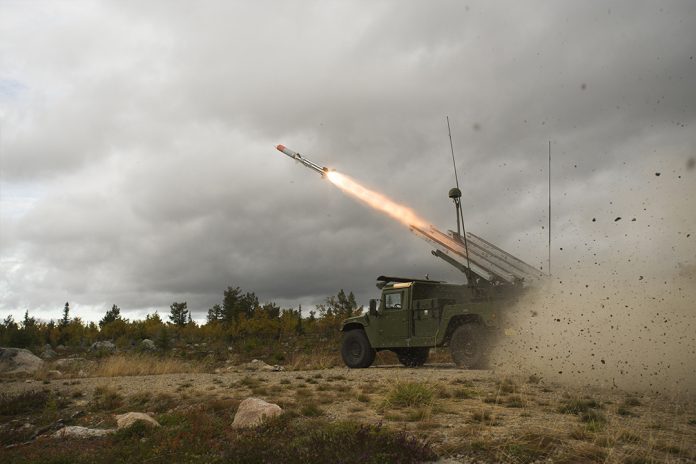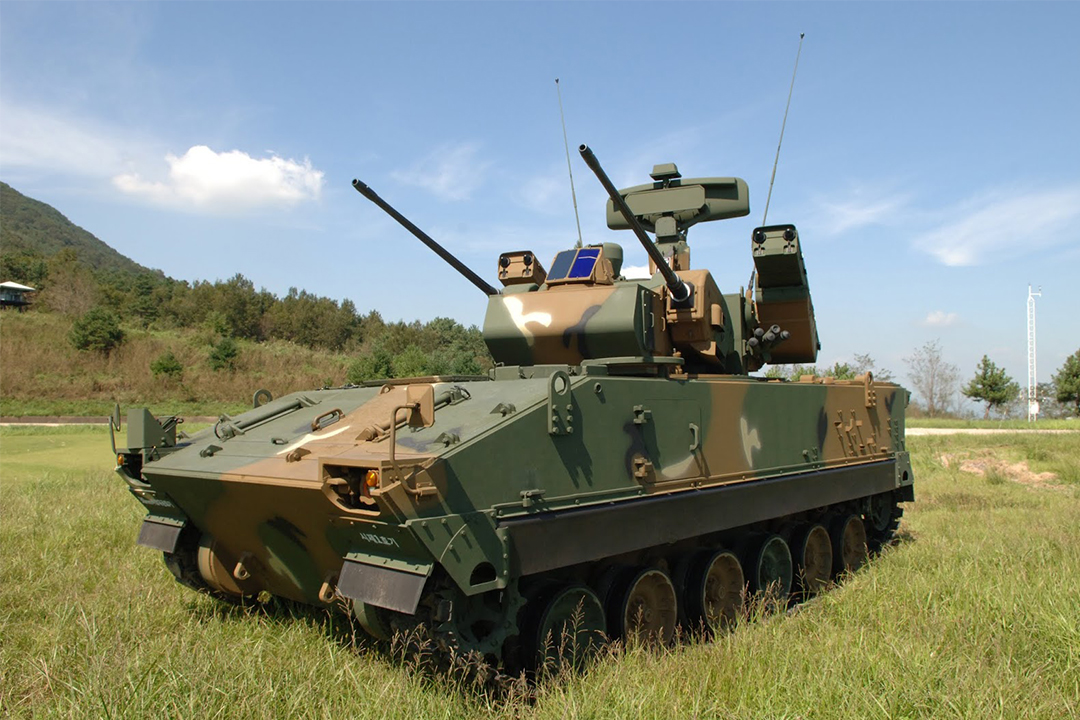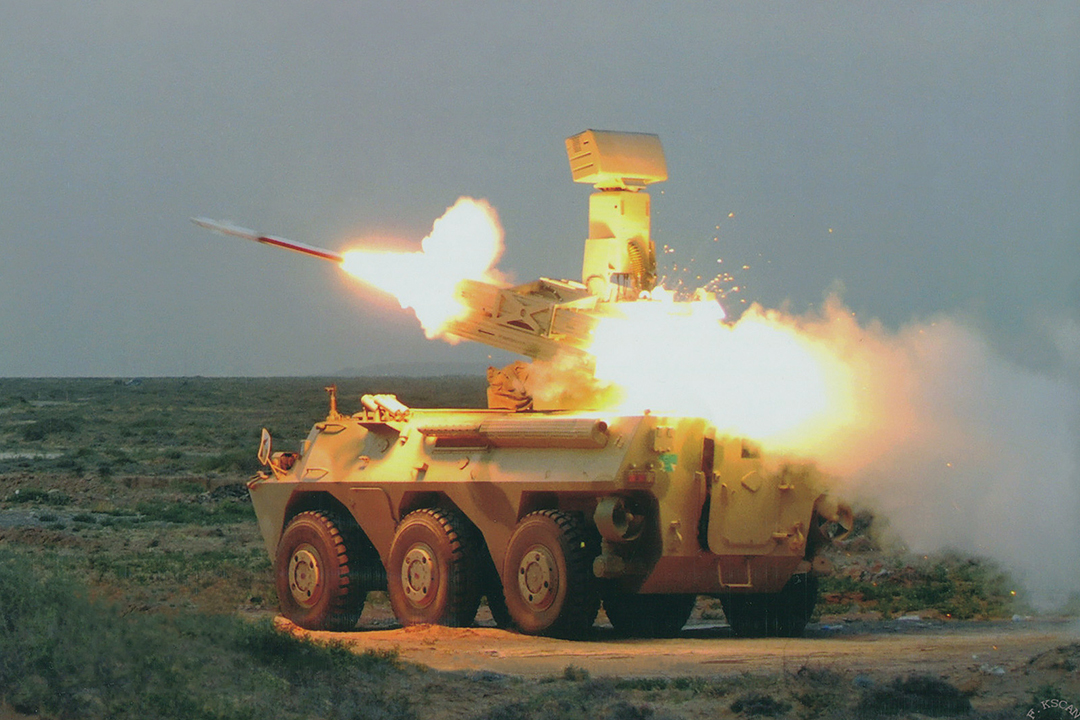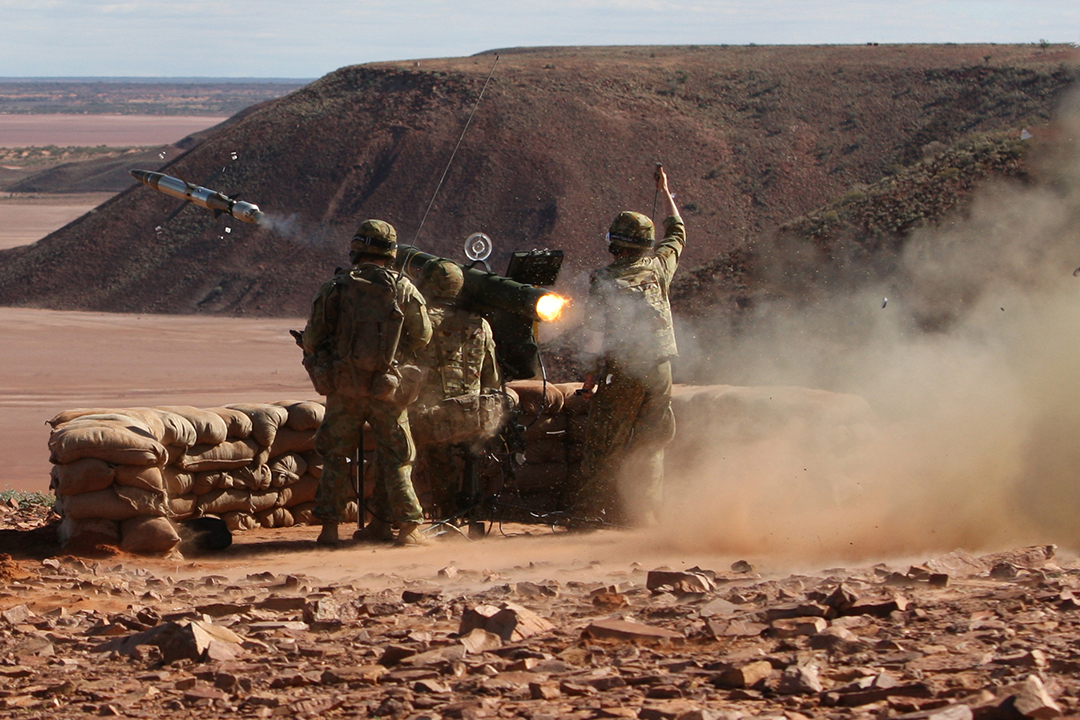
Published in the September/October 2020 Issue – There is renewed urgency to provide air defence systems that not only work in isolation, but can be networked for ground protection in depth.
Tactical air defence has been widely neglected by many armies with notable exceptions. This is at least partly the result of the focus on counter-insurgency (COIN) but also is reflected by the many decades of air superiority achieved by western militaries in conflicts since World War II. It is not surprising then that Russia and the Peoples Republic of China (PRC), the nations against which this superiority might be directed, would be the ones paying the most attention to advancing air defence capabilities. Assuring the protection of manoeuvring forward combat units, supporting indirect fire assets, and logistics trains and sites is of critical importance when one is not assured of air cover. This has been complicated by the additional threats of unmanned aerial systems (UAS) and cruise missiles.
Peter Wilson and John Parachini senior international defence researchers at the RAND Corporation in a 6 May 2000 article entitled Russian S-400 Surface-to-Air Missile System: Is It Worth the Sticker Price? explained that “the capability of an individual system is not the central point. To be effective the systems need to be deployed within a larger integrated air and missile defence system.” This is equally true at the tactical level to cover a dynamic manoeuvring force and its supporting elements at fixed sites behind the front lines. The introduction of low level UAS systems, in particular, has expanded the need for this networking to cover other ground combat elements as well and requires a resiliency with a mutually supporting network established in depth.
Tactical Air Defence
Considering the expansion of the air threat a number of militaries including those in the Asian Pacific region are considering establishing air defence capabilities. In doing so they might well look to the example of the Republic of Korea (ROK) which has not only built a well thought out air defence but has done so largely with a collection of locally developed and manufactured systems.
The ROK Army has given particular attention to protecting its ground manoeuvre forces. With the most forward elements there is the BiHo K30 by Hanwha defence. A twin 30mm auto-cannon system on the K200, it includes a TPS-830K X-band surveillance radar and panoramic Electro Optical Targeting System (EOTS) with thermal, TV, and laser ranging. Shingung surface-to-air guided missiles (SAM) were added in 2015 extending effective range to 7,000 meters. It will be supplemented by a new Anti-Aircraft Gun Wheeled (AAGW) system which saw a full rate production contact award to Hanwha Defence in June 2020. AAWG utilises the – 8×8 wheeled combat vehicle chassis with twin 30mm auto-cannon coupled to an EOTS on the turret roof. With a 3,000m range it can engage low flying aircraft, helicopters, and unmanned drones.

The foundation of a modern effective tactical air defence has been shown to best rely on a combination of guns and missiles. The ROK has achieved this by locally adapting the French Crotale SAM as the K-SAM Chunma or ‘Pegasus’. Again using the K200 tracked chassis it combines Samsung/Thales developed S-Band surveillance and Ku-Band tracking radar with day TV, infrared cameras and identification friend or foe (IFF) capable of all visibility, all weather tracking of up to 20 targets at 35 kilometres. The VT-1 high explosive focused fragmentation proximity detonating warhead missiles have an 11km effective range. Its exceptional missile manoeuvrability and Mach 3.5 speed as well as ECCM and chaff resistance make it a formidable system. The system provided for defence of supporting positions behind the forward lines and high value installations.
Mid-Range
A layered defence in depth requires an overlapping tier of coverage typically provided by mid-range air defence missile systems. Two that have been selected in this role by the Pacific area air defence community are the Kongsberg/Raytheon National Advanced Surface to Air Missile System (NASAMS) and Rafael Advanced Defence Systems Surface to air Python and DERby (SPYDER). The former is already used by six European militaries and five other countries including reportedly Chile. Indonesia adopted the system in 2017 and Australia in March 2019 announced its intent to purchase. Eirik Lie, Kongsberg president stated in a 20 June 2020 release: “The continuous technical evolution of the system and the addition of users confirm that NASAMS is the most modern and advanced air defence system in the world..” The system is compatible with use on light vehicles like the HMMWV and Hawkei, tactical trucks or trailer mounting. It incorporates the Raytheon MPQ-64 Sentinel X-Band 3D radar that can detect, classify and track aerial targets at 40km distance. An improved MPQ-1F1 adds the capability to acquire, track, alert to and determine the azimuth of attack of enemy rockets, artillery, and mortar fires. The missile is derived from the AIM-120 AMRAAM air-to-air missile. Its stationary firing places the NASAMS in the roles of protecting fixed targets or positioned behind forward lines.
SPYDER is medium truck mounted firing both Python-5 and Derby missiles. The former is a Mach 4 ‘lock-on-after-launch’ electro-optic and infrared (EO/IR) homing missile while the later uses ‘fire and forget’ active radar. These are coupled in a battery with a Elta EL/M-2106 3D Active Electronically Scanned Array (AESA) surveillance or EL/M-208 multi-mission radar. India, Singapore, and Vietnam have fielded it with the Philippines Air Force (PAF) indicating in December 2018 that it had also adopted the system.
Japan’s Ground Self Defence Force (JGSDF) has chosen to primarily rely on missiles for tactical air defence which a significant focus on heat seeking systems. Its Type 91 Kai MANPADS, locally developed by Toshiba, uses a dual infrared and ultraviolet seeker. It captures the target profile prior to launch to reduce distractions like flare counter measures. A light vehicle mounted version with eight missiles, the Type 93, is also fielded. Type 81 or Tan-SAM is a locally developed truck mounted infrared heat seeking surface-to-air missile of local design although the upgraded SAM-1C has an active radar seeker and 14km range. Typically it is used in a battery of two launchers plus a 3D phase array search and tracking radar with an electro-optic/thermal backup. It’s Type 11 mobile SAM is an improved model which some reports suggest may have increased 18km range. All these systems are mobile but require set-up and stationary firing making them more suited for site defence. The force does, however, field the Type 87, a tracked air defence system built around stabilised twin Oerlikon 35mm auto-cannon, search and tracking radar, and electro-optic sights which offers on-the-move aerial defence. With the new Japanese active defence policy and focus on recovering and holding outlying islands, the need for additional expeditionary air defence may well be come evident.

Manportable SAMs
Man portable surface-to-air missiles, referred to as MANPADS, are widely fielded with versions like the US Raytheon FIM-92 Stinger, Russian KBM SA-14 Strela and SA-18 Igla, Chinese HN, QW series and Fei Nu-6 (FN-6) Flying Crossbow series, as well as South Korea’s indigenous Chiron and North Korea’s HT-16PGJ in many armies. These are all heat seeking ‘fire and forget’ systems. However, one quite different system, the Saab Bofors Dynamics RBS-70, has gained a number of adherents in the Asian-Pacific region including Thailand, Indonesia, Singapore and Australia. Uniquely among MANPADS, it is a tripod/pedestal mounted laser beam riding system. It has a very high intercept speed (Mach 2.0 in the latest BOLIDE model) with a target adaptable proximity fuse. Its 3,000 tungsten spheres and shaped charge warhead make it deadly for any air target. With a range of up to 8km meters and 6km altitude it is particularly suited for providing defence surrounding an asset. Its ‘Next Generation’ model included high-resolution thermal imaging, gunner cueing, and auto-tracking. The company has capitalised on the RBS-70 reputation by introducing the MSHORD (Mobile SHORAD). It provides light or combat vehicle mounted Giraffe 1X search radar with 75km range, command and control with tactical data links, and remote weapon station mounted RBS-70NG engagement.

The Republic of China (Taiwan) Army has sought to develop indigenous air defence capabilities through its National Chung-Shan Institute of Science and Technology (NCSIST). One effort lead to the Antelope truck mounted Sky Sword 1 SAM missile with infrared heat seeking system. These can be linked with the CS/MPQ-78 3D pulse radar with 46km range for surveillance and direction. The system has become seriously dated and there are reports that NCSIST has been actively pursuing the adaption of the Sea Oryx naval point defence system (similar to the US Rolling Airframe Missile) to a truck mounting.
The Peoples Liberation Army’s 2019 Defence White Paper also identified the need to improve its air defence. To a large degree, its tactical and short range air defence relies primarily on a mix of towed and self-propelled anti-aircraft gun systems. These include the Norinco PGZ95 with four 25mm auto-cannon and two QW-2 IR heat seeking missile directed by electro-optic sights with a CLC-1 S-Band search radar. Another is the PGZ09 mounting two 35mm auto-cannon (a licensed Oerlikon GDF) with a forward mounted tracking radar and rear Doppler surveillance radar with a reported range of 20km. Both use a tracked chassis similar to that of self propelled artillery but others are based on wheeled light armoured carriers. In May 2019 the PLA debuted such a system on an 8×8 chassis mounting a single turret mounted 35mm auto-cannon with a roof mounted radar and likely electro-optic aiming. Chinese media reported the system was designed to “intercept air targets including drones and cruise missiles.”
On the tactical mobile missile side there is the Hongqi HQ-7 (FM80/90 export), a reverse engineered version of the command guided French Crotale, the HQ-61 radar guided truck mounted SAM (based on the US AIM-7 Sparrow), the FLV/FLG/FL2000 and Yi Tian 6X6 WZ551 with QW-1A IR seeker missiles. The truck mounted Sky Dragon 12 GAS15 short range and Sky Dragon 50 GAS2 medium range systems were both unveiled in September 2014 at a regional defence exhibition.
Despite the recent new attention given to tactical and short range air defence it remains unclear if it is sufficient to address the degree to which the air threats to combat forces has rapidly increased. The US and Western armies, even while launching a number of accelerated development programmes, remain woefully ill prepared. Even Russian systems have experienced successful strikes such as on the UMP Pantsir in Syria. The Pantsir was self-acclaimed as the most advanced AD system, but attacks on it recognise that effective defence relies on more than just a single piece of equipment or weapon. Ruslan Pukhov, director of Russia’s Centre for Analysis of Strategies and Technologies explained in an a 19 September 2019 interview: “It is necessary to understand that the Pantsir-S1 SPAAGM is an element of point air defence and cannot act equally effectively as an air defence asset of individual units.”
by Stephen W. Miller












